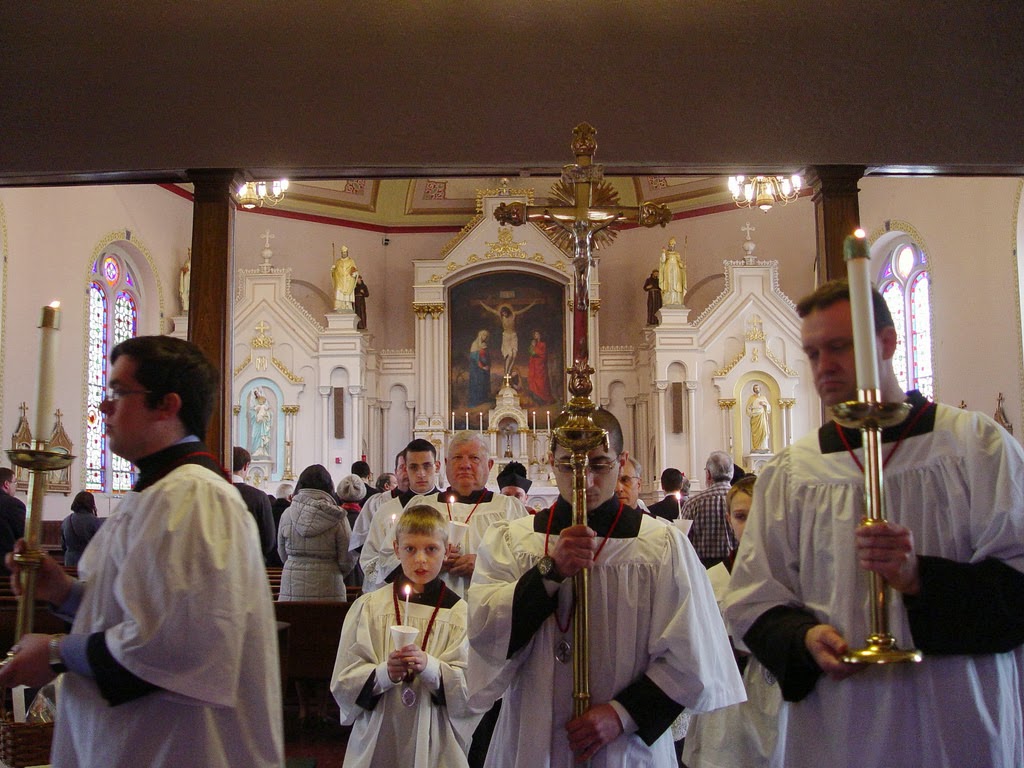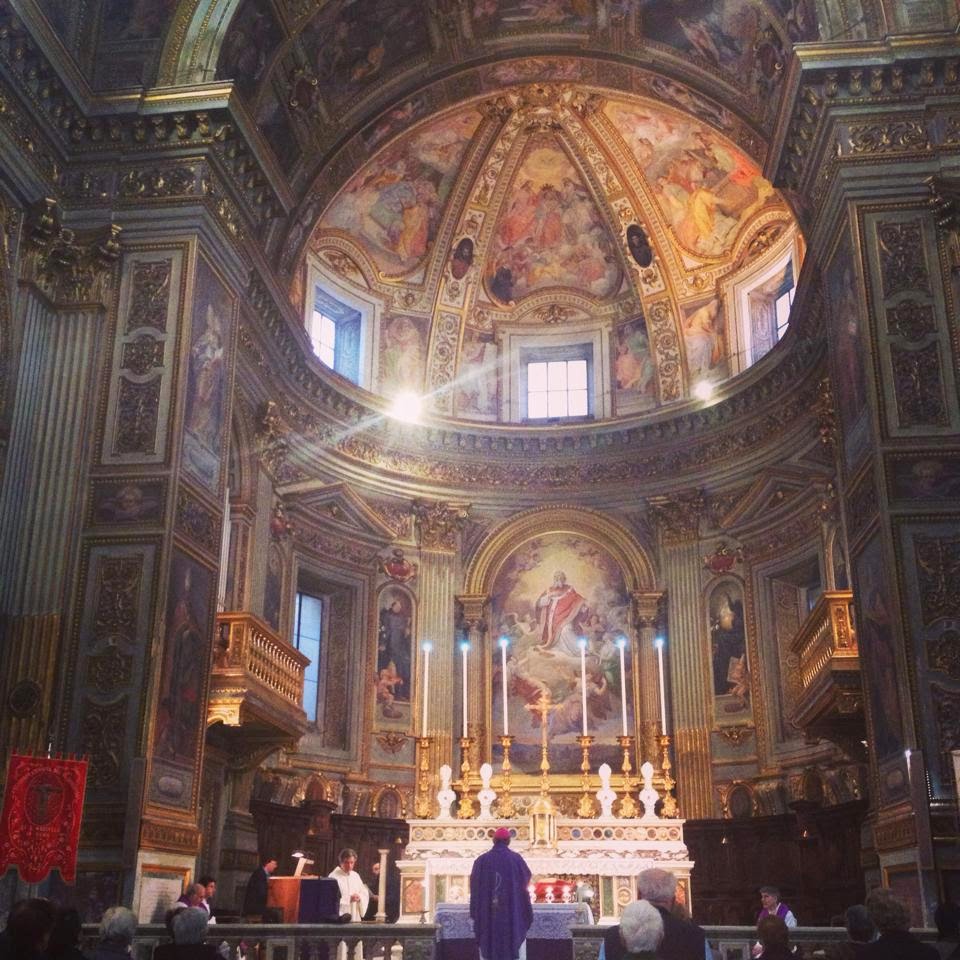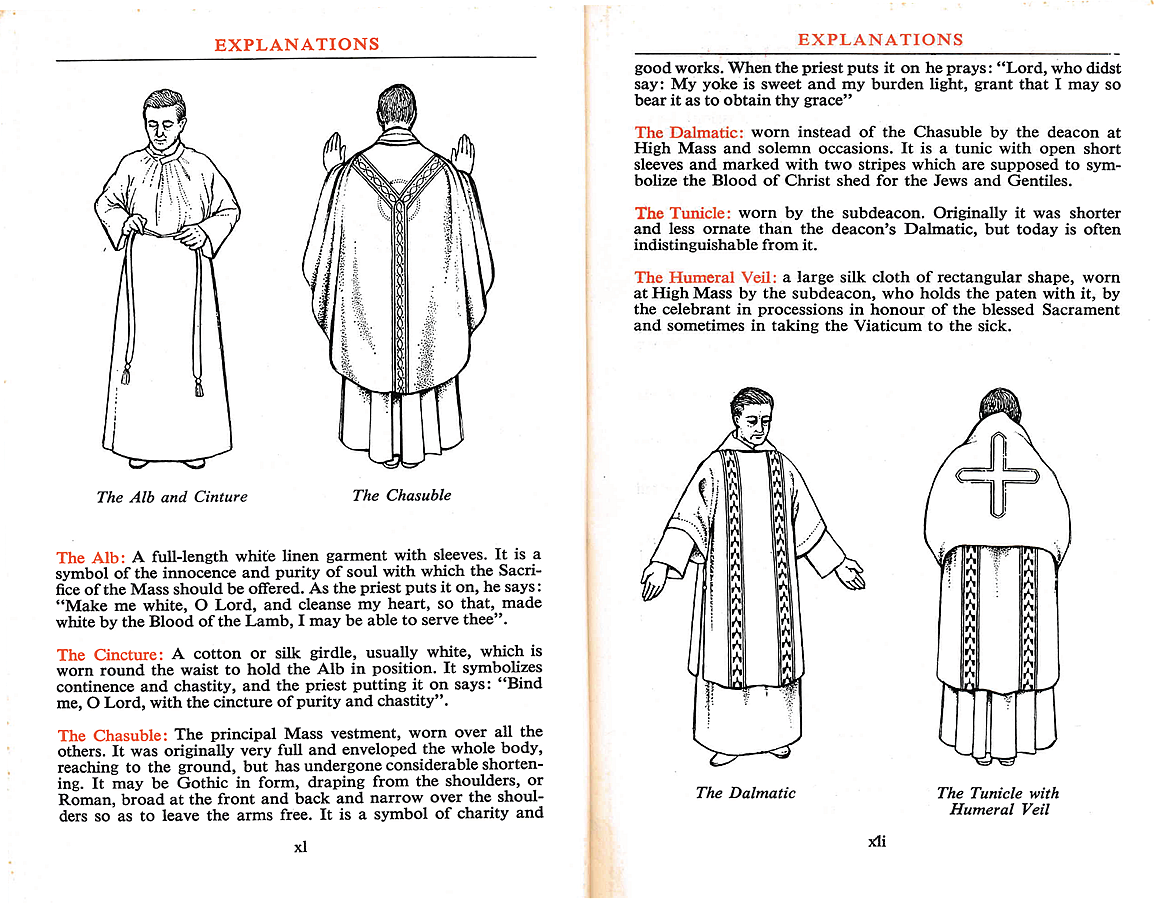![]() |
| Pope John XXIII celebrating Mass |
A reader of Pope John XXIII’s writings will often find him quoting or paraphrasing the text of the Holy Mass—in the only form in which he knew it, of course: the traditional Latin Mass, that inexhaustible nourishment of the saints. I will bring together here a few poignant examples.
In Pope John’s inaugural encyclical
Ad Petri Cathedram—a majestic exposition of the truth, peace, and unity that are found in and through the Catholic Church alone, to which the Pope graciously invites all mankind and especially Christians not in full communion with the Church (no wishy-washy ecumenism here)—we find a succinct treatment of the Church’s “unity of worship,” a reality that was at that time very perceptible across the world.
74. As for unity of worship, the Catholic Church has had seven sacraments, neither more nor less, from her beginning right down to the present day. Jesus Christ left her these sacraments as a sacred legacy, and she had never ceased to administer them throughout the Catholic world and thus to feed and foster the supernatural life of the faithful.
75. All this is common knowledge, and it is also common knowledge that only one sacrifice is offered in the Church. In this Eucharistic sacrifice Christ Himself, our Salvation and our Redeemer, immolates Himself each day for all of us and mercifully pours out on us the countless riches of His grace. No blood is shed, but the sacrifice is real, just as real as when Christ hung from a cross of Calvary.
76. And so Saint Cyprian had good reason to remark: “It would be impossible to set up another altar or to create a new priesthood over and above this one altar and this one priesthood.”
77. Obviously, of course, this fact does not prevent the presence in the Catholic Church of a variety of approved rites, which simply enhance her beauty. Like a king’s daughter, the Church wears robes of rich embroidery.
78. All men are to have part in this true unity; and so, when a Catholic priest offers the Eucharistic Sacrifice, he presents our merciful God with a spotless Victim and prays to Him especially “for Thy holy Catholic Church, that it may please Thee to grant her peace, to protect, unite, and govern her throughout the world, together with Thy servant our Pope, and all who truly believe and profess the Catholic and Apostolic faith.”
Pope John seemed especially drawn to the Offertory prayers of the Roman Missal, which were abolished by his successor in 1969. Here are two passages from his diaries in which he spontaneously expresses himself in the words of the offering of the chalice.
My failings and incapacities, and my “countless sins, offences and negligences” for which I offer my daily Mass, are a cause of constant interior mortification, which prevents me from indulging in any kind of self-glorification but does not weaken my confidence and trust in God, whose caressing hand I feel upon me, sustaining and encouraging. Nor do I ever feel tempted to vanity or complacency. “What little I know about myself is enough to make me feel ashamed.” What a fine saying that is, which Manzoni put in the mouth of Cardinal Federico [in The Betrothed, ch. 26]. (p. 301; between 27 Nov. and 3 Dec. 1960)
First of all: “I confess to Almighty God.”
During my whole life I have kept faithful to my practice of weekly confession. Several times during my life I have renewed my general confession. So now I content myself with a more general examination, without precise details, but in the words of the offertory prayer of my daily Mass: thinking of my “countless sins, offences and negligences,” all of which have already been confessed in their turn but are still mourned and detested. …
The vivid memory of the failings of my life, eighty years long, and of my “countless sins, offences and negligences” was the general matter for my holy confession which I renewed this morning to my spiritual director, Mgr. Alfredo Cavagna, here in my bedroom where my predecessors Pius XI and Pius XII slept, and where in fact Pius XII died on 9 October, 1958, until now the only pope to die here at Castel Gandolfo, in the summer residence.
Lord Jesus, as you assure me of your great and eternal forgiveness, so continue to have pity on me. (pp. 304-5, 11 August 1961)
The Priest and the Eucharistic Sacrifice
![]() |
| John XXIII celebrating the Papal Mass |
The most outstanding public testament to Pope John’s deep and abiding love of the Mass is his encyclical on the priesthood,
Sacerdotii Nostri Primordia, of August 1, 1959, for the centenary of the death of St. John Vianney.
The devotion to prayer of St. John Mary Vianney, who was to spend almost the whole of the last thirty years of his life in Church caring for the crowds of penitents who flocked to him, had one special characteristic—it was specially directed toward the Eucharist.
It is almost unbelievable how ardent his devotion to Christ hidden beneath the veils of the Eucharist really was.“He is the one,” he said, “Who has loved us so much; why shouldn’t we love Him in return?” He was devoted to the adorable Sacrament of the altar with a burning charity and his soul was drawn to the sacred Tabernacle by a heavenly force that could not be resisted.
This is how he taught his faithful to pray: “You do not need many words when you pray. We believe on faith that the good and gracious God is there in the tabernacle; we open our souls to Him; and feel happy that He allows us to come before Him; this is the best way to pray.” He did everything that there was to be done to stir up the reverence and love of the faithful for Christ hidden in the Sacrament of the Eucharist and to bring them to share in the riches of the divine Synaxis; the example of his devotion was ever before them. “To be convinced of this”—witnesses tell us—“all that was necessary was to see him carrying out the sacred ceremonies or simply to see him genuflect when he passed the tabernacle.”
As Our predecessor of immortal memory, Pius XII, has said: “The wonderful example of St. John Mary Vianney retains all of its force for our times.” For the lengthy prayer of a priest before the adorable Sacrament of the Altar has a dignity and an effectiveness that cannot be found elsewhere nor be replaced. And so when the priest adores Christ Our Lord and gives thanks to Him, or offers satisfaction for his own sins and those of others, or finally when he prays constantly that God keep special watch over the causes committed to his care, he is inflamed with a more ardent love for the Divine Redeemer to whom he has sworn allegiance and for those to whom he is devoting his pastoral care. And a devotion to the Eucharist that is ardent, constant and that carries over into works also has the effect of nourishing and fostering the inner perfection of his soul and assuring him, as he carries out his apostolic duties, of an abundance of the supernatural powers that the strongest workers for Christ must have. …
If it is obviously true that a priest receives his priesthood so as to serve at the altar and that he enters upon this office by offering the Eucharistic Sacrifice, then it is equally true that for as long as he lives as God’s minister, the Eucharistic Sacrifice will be the source and origin of the holiness that he attains and of the apostolic activity to which he devotes himself. All of these things came to pass in the fullest possible way in the case of St. John Vianney.
For, if you give careful consideration to all of the activity of a priest, what is the main point of his apostolate if not seeing to it that wherever the Church lives, a people who are joined by the bonds of faith, regenerated by holy Baptism and cleansed of their faults will be gathered together around the sacred altar? It is then that the priest, using the sacred power he has received, offers the divine Sacrifice in which Jesus Christ renews the unique immolation which He completed on Calvary for the redemption of mankind and for the glory of His heavenly Father. It is then that the Christians who have gathered together, acting through the ministry of the priest, present the divine Victim and offer themselves to the supreme and eternal God as a “sacrifice, living, holy, pleasing to God” (Rom 12:1). There it is that the people of God are taught the doctrines and precepts of faith and are nourished with the Body of Christ, and there it is that they find a means to gain supernatural life, to grow in it, and if need be to regain unity. And there besides, the Mystical Body of Christ, which is the Church, grows with spiritual increase throughout the world down to the end of time. …
Speaking as a Father, We urge Our beloved priests to set aside a time to examine themselves on how they celebrate the divine mysteries, what their dispositions of soul and external attitude are as they ascend the altar and what fruit they are trying to gain from it. . . .
When We gaze from this height of the Supreme Pontificate to which We have been raised by the secret counsels of Divine Providence and turn Our mind to what souls are hoping for and expecting, or to the many areas of the earth that have not yet been brightened by the light of the Gospel, or last of all to the many needs of the Christian people, the figure of the priest is always before Our eyes. If there were no priests or if they were not doing their daily work, what use would all these apostolic undertakings be, even those which seem best suited to the present age? Of what use would be the laymen who work so zealously and generously to help in the activities of the apostolate? (nn. 45-48, 52-53, 59, 98-99)
![]() |
| Pope John Celebrating the Divine Liturgy |
We see here a Pope whose Eucharistic theology and piety are utterly traditional, at one with the Church Fathers, St. Thomas Aquinas, the Council of Trent, and all that is best in the medieval and early modern periods. What we do not catch sight of,
ever, in his diaries or in his papal writings is that querulous modernist spirit that downplays, relativizes, or even denies outright the sacrificial character of the Mass, the real presence of Our Lord in the Blessed Sacrament, the value of Eucharistic Adoration, the fittingness of solemnity, reverence, and beauty in the carrying out of the liturgy, and—to sum it up handily—all that Pius XII authoritatively taught in his 1947 encyclical
Mediator Dei, of which, not surprisingly, John XXIII has this to say:
It is not Our intention at this time [in Sacerdotii Nostri Primordia] to enter upon a lengthy treatment of the Church’s teaching on the priesthood and on the Eucharistic Sacrifice as it has been handed down from antiquity. Our predecessors Pius XI and Pius XII have done this in clear and important documents [Ad Catholici Sacerdotii; Menti Nostri; Mediator Dei] and We urge you to take pains to see to it that the priests and faithful entrusted to your care are very familiar with them. This will clear up the doubts of some; and correct the more daring statements that have sometimes been made in discussing these matters.
I cannot help thinking that it was just such doctrinal convictions and sentiments that prompted John XXIII to push back against the excessive influence of Fr. Annibale Bugnini under Pius XII. Bugnini had been secretary of the preconciliar commission on the liturgy, but in October 1962 Pope John appointed Fr. Ferdinando Antonelli secretary of the conciliar commission on the liturgy instead, and demoted Bugnini to the position of a
peritus. At the same time, Bugnini was removed from the professorship of Liturgy at the Pontifical Lateran University in Rome "because his liturgical ideas were seen as too progressive" (says his close collaborator, Piero Marini, in
A Challenging Reform). Would that Bugnini's fortunes had dwindled away to nothing and the later work of the Consilium had been nipped in the bud! It was already far too late by the time Paul VI, thoroughly disenchanted, exiled Bugnini to Iran.
One more reason to rise up and call John XXIII blessed: he knew well the teaching of Holy Mother Church, and he told the faithful again and again to adhere to it as to an unfailing rule. He wanted to find new ways to proclaim the Faith to modern man, but the content was always to be the very same ancient Faith that he knew modern man needed—there was to be no innovation or compromise about that. In this respect John XXIII was very different from many ecclesiastical rulers we have seen since the Council, and therefore stands as a reproach to them.
![]()










































































.jpg)
























